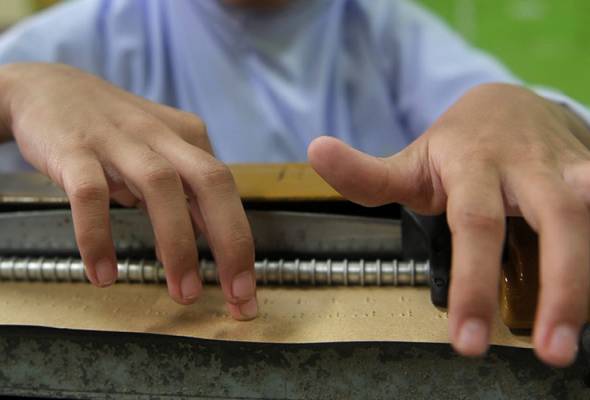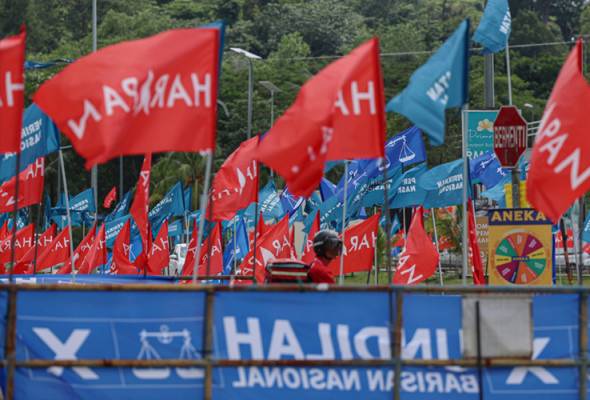
Published in AstroAwani & theSun, image by AstroAwani.
The main political coalitions have, by now, presented their manifestos with the respective enumerations of distinctive and not-so distinctive policies to appeal to voters and clinch maximal support in what’s a first-past-the-post (FPTP) electoral system – where the race is decided only by the winner crossing the threshold of 50.1% and above – for the upcoming GE15.
Many of these proposed policy recommendations in the manifestos should be attractive and alluring to the rakyat, whether seasoned voters who may have a tinge of cynicism due to their experience of unfulfilled promises in the past or first-timers.
All the manifestos are focussed on “typical” issues (such as the cost of living, employment opportunities, public transportation, etc.) as well as emerging issues (such as food security, ageing, welfare of gig economy workers, etc.). Many of the issues deal with bread-and-butter stuff which ranks on top of voters’ concerns and worries.
So, the manifestos reflect the concerns and worries of voters.
However, of critical importance also is the fact that social minority groups – such as those distinguishable by their physical or mental/psychological characteristics which set them apart from the “normal” mainstream society and – which are marginalised continue to be neglected by political coalitions in their quest to chase after votes.
Perhaps a hybrid proportional representation (PR) system should be on the cards?
And this is none so pertinent as in the lack of a specific and focussed policy attention and space on special educational needs (SEN) or otherwise special education (SPED) for special needs children in Malaysia.
No one should be left behind – particularly as we seek to move towards a more developed and sophisticated and, therefore, caring and inclusive nation in every respect.
To be fair, however, Pakatan Harapan’s (PH) manifesto highlighted the need to establish a People with Disability (PWD) Agency. Not only that, the coalition will be re-implementing its’ “zero-reject” policy for students where it emphasises inclusivity of PWD students in the mainstream schools.
As for Perikatan Nasional’s (PN) manifesto, it has touched on improving the Community Rehabilitation Centres (PDK) and introducing individual transition plans for students of special needs post-school life.
Surprisingly, Barisan Nasional’s (BN) manifesto has not touched on the needs and welfare of special needs children at all.
What’s exactly meant by a child with special needs?
The American Psychological Association (APA) defines a special needs child as a person who requires special educational attention because they have difficulties or disabilities in either the intellectual, physical or emotional dimensions and aspects which affects the learning capabilities.
Whilst PWDs – understood primarily as persons who suffer from some visible or manifest physical or physiological defect(s) – have been given attention in Malaysia, there has been some lack of sensitivity and empathy accorded to children with learning or intellectual impairments and the associated behavioural retardations. This could be attributed to a general unfamiliarity with the issue (as an abstract topic) and situation (as a concrete setting), at the risk of oversimplification.
In turn, learning disabilities is of any neurologically or cognitive (i.e., connected to the brain as the source and “motor” of mental and intellectual performance) based diseases that can be characterised by significant delays in the acquisition and formation of specific academic skills (e.g., written language) or practical skills (e.g., basic carpentry).
The performance of these children will be particularly below standard or sub-par, for instance. The list of neuro-developmental disabilities includes dyslexia, Down Syndrome, autism (e.g., Asperger’s Syndrome), cerebral palsy, epilepsy, attention-deficit hyperactivity disorder (ADHD), Tourette Syndrome, and any other permanent neurological disorders and regressive behavioural patterns, e.g., speech impairments. At the same time, there’re cases where children suffer from sensory defects such as visual (sight) and auditory (hearing).
These group of children need special and distinct attention and care.
In other words, SEN goes beyond just meeting and catering for the physical needs of special needs children (i.e., “passive lifestyle”) and extend to ensuring that they can grow, develop and flourish as much as possible just like any other children (i.e., “active lifestyle”) within the pre-existing constraints.
The latest data of PWD people by age only dates back to 2017, as maintained by the Department of Statistics (DOSM).
There were about 453,258 registered as PWD in 2017. Out of that, a total of 157,714 PWD had some form of learning disability (just to pick and select one category) of which 6803 were less than 6 years, 41,224 were between 6-12 years, 41,152 were between the age of 13-18 years and 15,786 were between the age 19-21 years. All in all, this constitutes about 104,965 students who require(d) SEN in 2017.
As is standard, in Malaysia, SEN also extends to those with visual impairment and hearing impairment (see “Implementation of Inclusive Education Programme for Special Education Need Students with Learning Disabilities in Malaysia”, Siti Rubiyani Omar & Abd Aziz Sulaiman, International Journal of Civilisational Studies and Human Sciences, Vol. 1, Issue 4, 2018).
According to a news report by the New Straits Times/NST (“Education Ministry registers 87,574 special needs students as of June”, September 26, 2019), the Ministry of Education (MOE) had registered a total 87,574 SEN students in 2019.
Of the total, about 2,492 students were currently under the Special Education Schools (SES) as specialised institutions and 68,874 students in the Special Education Integrated Programme (SEIP) which come under mainstream schools with special classes. All in all, 967 students were in preschool, 38,710 were in primary schools and 29,197 students were in secondary schools.
According to the then Director-General Datuk Dr Amin Senin, there were together 16,208 students in the Inclusive Education Programme (IEP) – which are mainstream schools that integrates one to five students with special needs in every class. The breakdown for the total number consists of 247 students in preschool, 8,221 in primary schools, and 7,740 in secondary schools.
He was further quoted as saying that under the IEP, the numbers have increased yearly from 2013 to 2018 with the latter recording a rise of up to 50.5 per cent in SEN students’ enrolment compared to 9.6 per cent in 2013.
The then Education Minister was Dr Mazlee Malik from the PH administration who implemented the “zero-reject” policy”. The educational policy was focused on inclusive access which resulted in many good outcomes in the special needs community.
Nonetheless, we can still emulate our closest neighbour Singapore in further enhancing access to and provision of SEN services.
The Ministry of Education (MOE) there introduced the SPED Curriculum Framework of Living, Learning and Working in the 21st Century in 2012 – which is highly targeted, customised and flexible based on an effective assessment system aimed at meeting the diverse needs of every special needs student in Singapore.
The Singapore approach seeks to ensure successful integration of children with special needs into the broader society via SPED schools.
Moving forward, even as the Malaysian government has implemented various initiatives such as the SES, SEIP and IEP alongside extra-curricular setting in the form of the PDK, much more can be done.
Every SEN child has their own unique needs and talents. Not forgetting that children who are born with Savant Syndrome, for example, possess exceptional abilities that’s far above the average such as the talent of rapid calculation (hypercalculia). The movie Rain Man (1988) comes to mind.
There’s a critical need to provide high-quality education (i.e., both in terms of the quality of teaching and learning methods as well as the materials employed) which caters to the personalised needs of special needs children – progressively along each step of the pathway towards full integration into and maturation within the broader community (like in Singapore).
Recalibrating and reforming SEN/SPED for special needs children in Malaysia is one of the first steps that stakeholders should act upon.
EMIR Research would now like to recommend the following policy proposals to further enhance SEN/SPED in Malaysia:
1.Establishing a comprehensive framework for SEN/SPED – which aims to enhance the curriculum and extra- or co-curricular activities of special needs children by ensuring that they develop in a holistic and comprehensive manner – covering their intellectual, mental, emotional, moral and physical attributes.
The framework must be very detailed, specific and systematic so that targeted and customised attention and care can be provided to the individual person with special needs.
It must function, in effect, as the “go-to manual” for reference in policy-making and implementation at the macro- (MOE and the Department of Special Education) as well as micro-level (school).
As it is, neuro-developmental disabilities are a complex area already (without even referring to the wider “genus” of the overall and broader disabilities field – which includes physical such as cystic fibrosis, muscular dystrophy, haemophilia, etc.).
2. Engaging with stakeholders such as private SEN/SPED schools – to ensure best learning and teaching outcomes via cross-sharing and exchanges of educational models and practices.
3. Encouraging and enhancing integration with the establishment of e.g., “community service” clubs in mainstream schools.
One of the most effective ways to reduce societal barriers among children with special needs is by having “community service” clubs that will focus on having extracurricular activities with special needs children. This will be part of the efforts to include and integrate special need students within the broader community.
It’ll normalise interactions between special needs children and mainstream peers and adults which will promote social adjustments later in life as well as provide the foundations for forging and fostering stronger bonds and ties in relationships outside of the schooling system.
Our MOE has always received one of the lion’s share of allocations under the Budget. Budget 2023 is no different with RM55 billion (largest). Even if a different government comes into power, it’s expected that it’ll be not much different the next time around.
Irrespective of whoever forms the next government, the MOE should make use of the allocation by earmarking investments and increasing the expenditure for SEN/SPED in terms of teacher and counsellor recruitment, infrastructure and facilities, etc.
Let’s aim to do more for our special needs children.
Jason Loh and Jachintha Joyce are part of the research team at EMIR Research, an independent think tank focused on strategic policy recommendations based on rigorous research.

